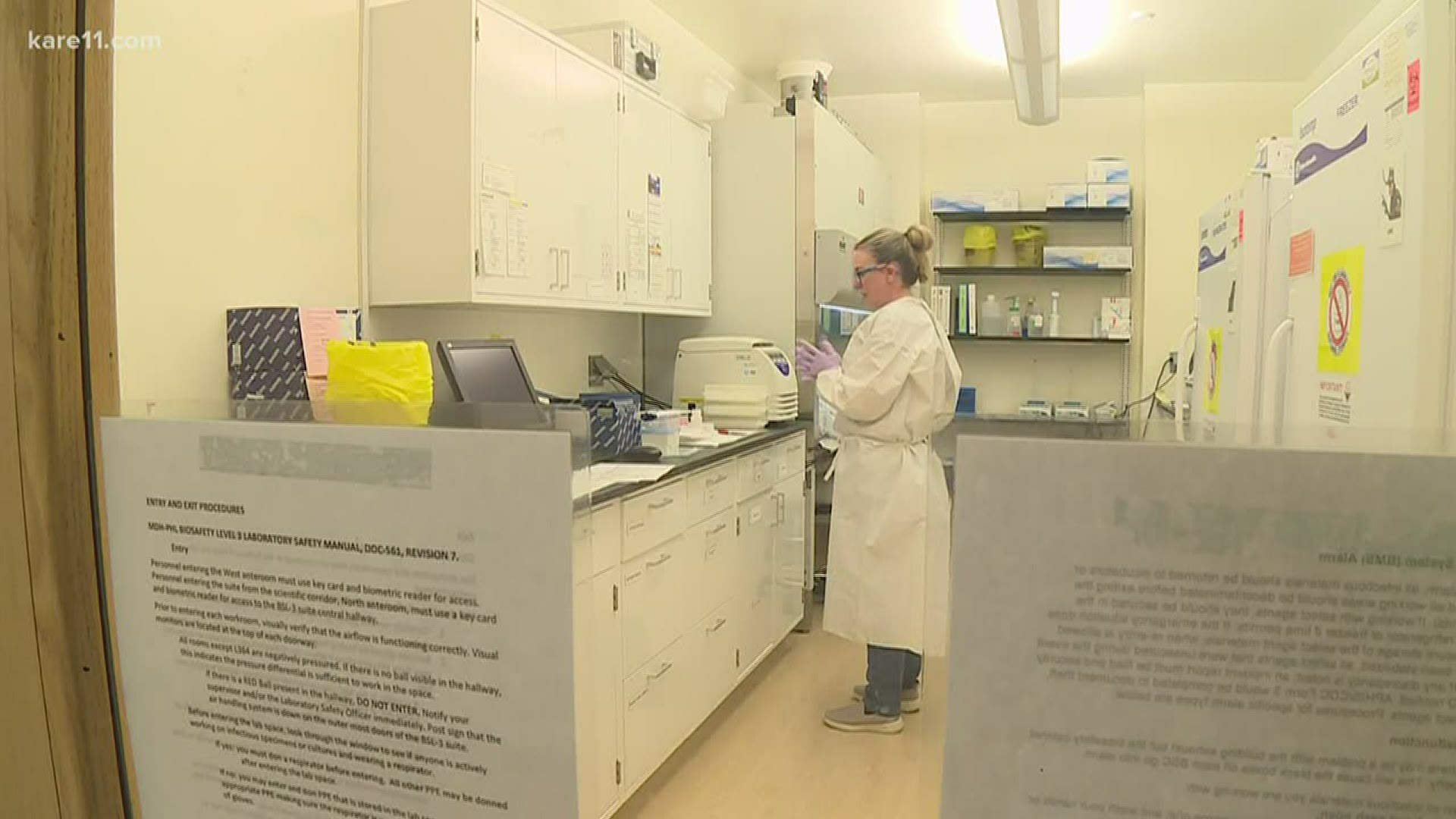MINNEAPOLIS — The first confirmed case of COVID-19 in Minnesota was announced March 6. The first confirmed case in the United States was announced in Washington state in January.
But was the virus circulating earlier?
"I don't think anyone really knows when this virus made its way to the United States," said Dr. Mark Schleiss, professor of pediatrics and the American Legion endowed chair of pediatric infectious diseases at the University of Minnesota Medical School.
Schleiss is now leading research which could shift Minnesota's timeline for the emergence of COVID-19.
The timeline for how the novel coronavirus emerged around the world has been put into question. In late April, officials in California announced two deaths in early February were due to COVID-19. Prior to that, the first U.S. death due to COVID-19 was believed to be February 28 in the Seattle area. Research published earlier this month reports SARS-COV-2, the virus which causes COVID-19, was spreading in France in late December 2019, a month before the first official cases in that country.
Schleiss is in a unique position to study this question. His work with pediatric infectious diseases means he has access to samples from 20,000 infant saliva swabs dating back to 2017. The samples, which are all anonymous, are also from newborns who were asymptomatic. Finding the virus in a sample prior to March 6, would indicate circulation earlier than currently documented.
"When COVID-19 came on the scene, we thought, well gosh, this might be an interesting resource to look at," said Schleiss.
Schleiss' research will test some of the samples for COVID-19 RNA.
"So we want to look over a period of a few months, from late 2019 into the spring of 2020, to see if we can pinpoint a time when we might see the infection appear in Minnesota," he said. "What we really want to try to do is get an epidemiological snapshot of when the first presence of COVID-19 might have been in Minnesota."
Schleiss thinks that presence was much earlier than March 6.
"I believe the virus was likely circulating in Minnesota prior to the first of the year, in late 2019," he said.
Dr. Schleiss says pinpointing when the virus was circulating is important, because studying samples from early cases could teach researchers more about the evolution of this strain.
"There are so many questions right now. If you are immune to it, can you get reinfected? Are there strains that mutate and change over time? If we had those [early] samples, we could really examine those samples in rigorous scientific fashion," he said.
If COVID-19 RNA is found in any of the samples, it could also help answer questions about infection in young children and possible transmission of COVID-19 from mother to unborn baby.
KARE 11’s coverage of the coronavirus is rooted in Facts, not Fear. Visit kare11.com/coronavirus for comprehensive coverage, find out what you need to know about the Midwest specifically, learn more about the symptoms, and see what companies in Minnesota are hiring. Have a question? Text it to us at 763-797-7215. And get the latest coronavirus updates sent right to your inbox every morning. Subscribe to the KARE 11 Sunrise newsletter here. Help local families in need: www.kare11.com/give11.
The state of Minnesota has set up a hotline for general questions about coronavirus at 651-201-3920 or 1-800-657-3903, available 7 a.m. to 7 p.m.

